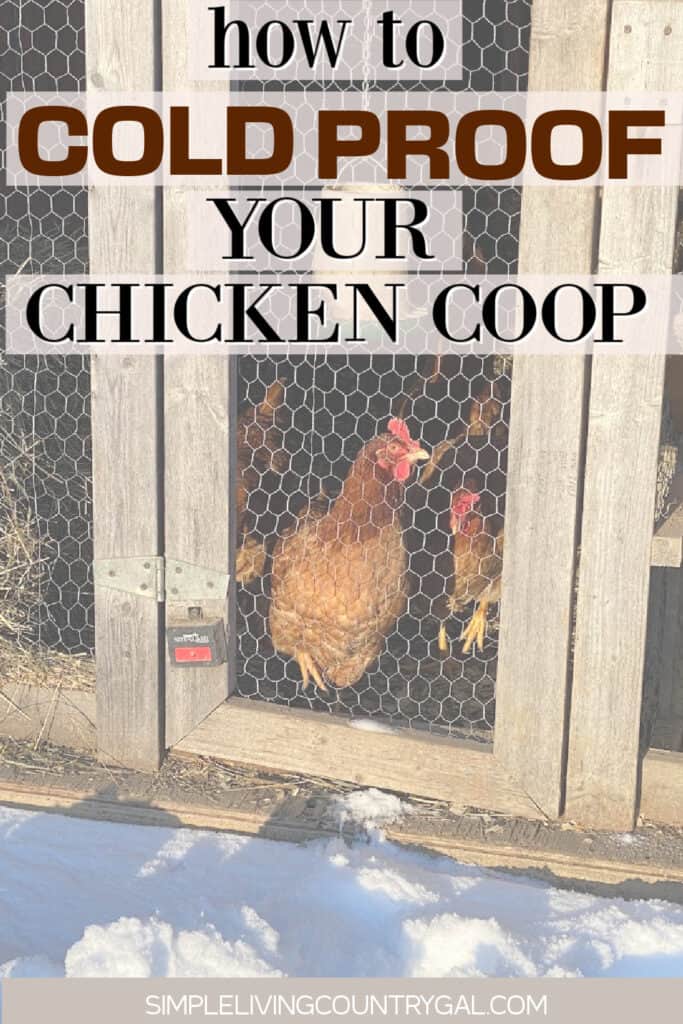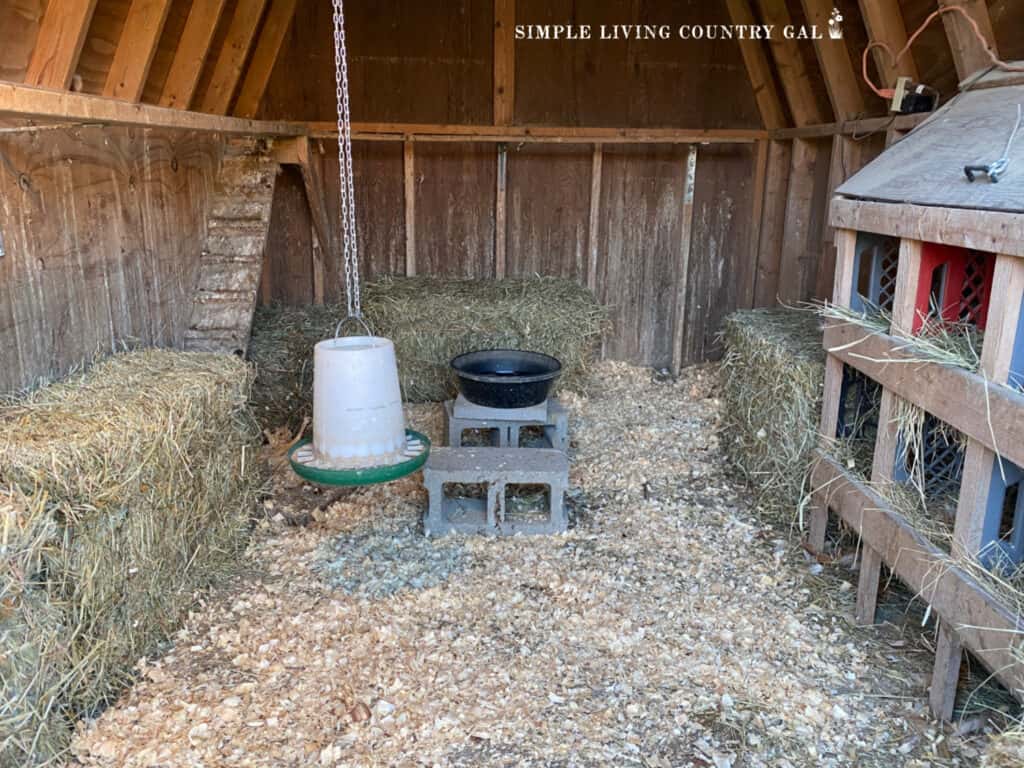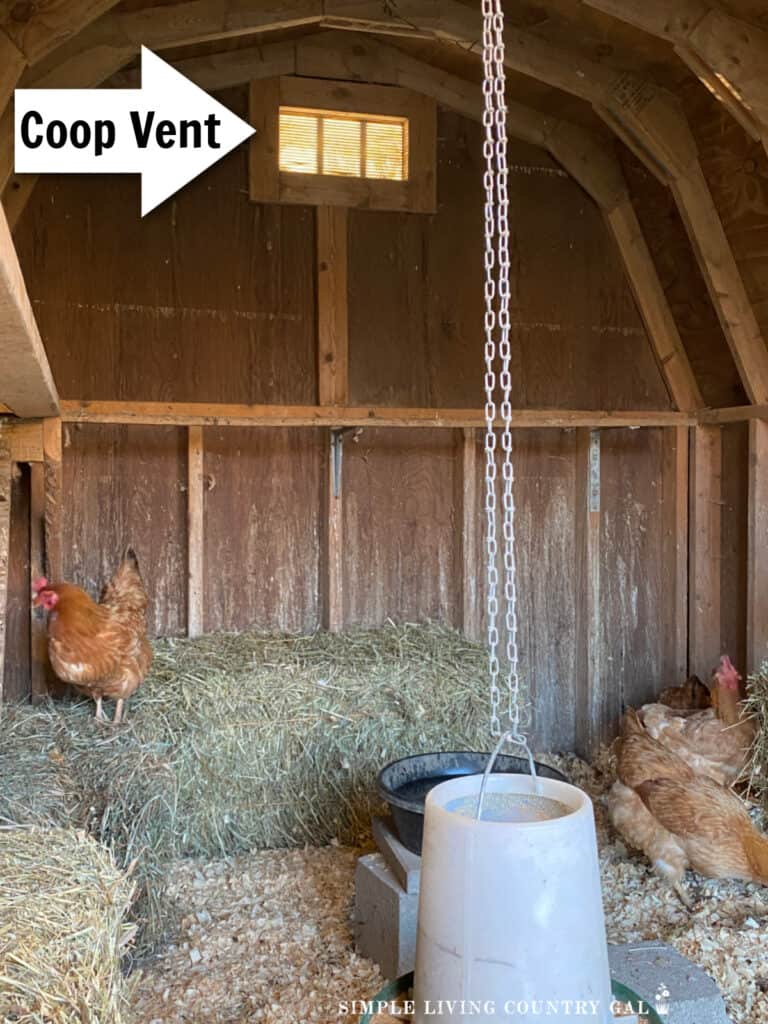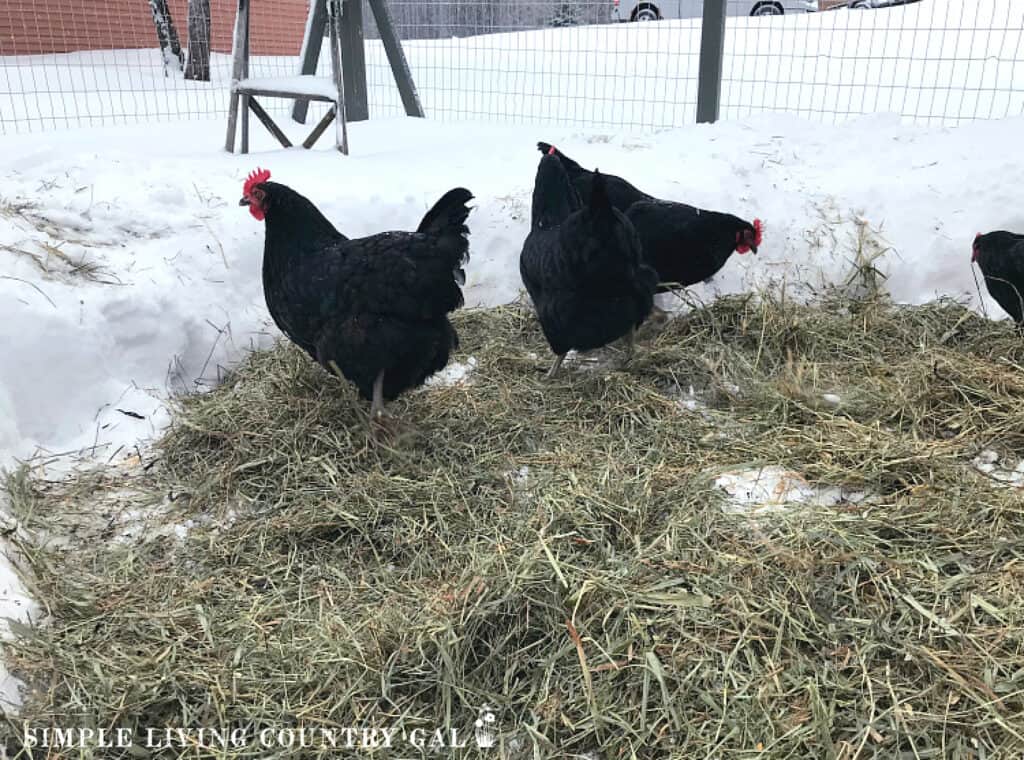Winter-proofing chicken coop
Being sure your chickens stay warm in the colder months is an important part of having a homestead. This list of winter-proofing chicken coop tips will help you create a warm home no matter how cold it is outside.
Raising chickens in the winter can be tricky, but with these tips, you will help them thrive even in the coldest temperatures.

As the chill of winter descends upon us, it’s not just ourselves we need to keep warm – our animals do as well. If this is your first winter with chickens or your 10th, this list of winter-proofing chicken coop tips will turn your cold coop into a cozy home.
Over the years, I have learned some great ways to keep our chickens warm and thriving even in below-zero temperatures. You can read our most popular article on How to Keep Chickens Warm Without Electricity for even more help.
Does my chicken coop need to be insulated for winter?
It’s true that chickens if given the time to adapt properly, will be able to withstand the rigors of winter. However, you will also want to help by adding some insulation to their coop. This will cut down on any drafts and intense cold from the walls, ceiling, or floor.
The good news is that you do not need to use traditional insulation which can be expensive. All you need is a barrier between them and the cold, and that means just about anything will work. If you have a stash of packing supplies from boxes you have gotten in the mail, that is a great insulator for a coop.
What can you use to insulate a chicken coop?
You may be surprised to know that you can insulate your coop using supplies you may already have lying around your homestead. Here are a few examples:
Styrofoam sheets or rolls – This works great on the ceiling or in between the walls of the coop. Just be sure to use them where your chickens cannot get to them.
Hay or straw bales – These are perfect for insulating the walls or the floor, with a bonus of easy clean up in the spring. Just add them to your compost pile, minus the string.

Bedding – Be sure to add a nice thick layer of bedding to help insulate the floor. Wood shavings or sawdust both work great.
Bubble wrap, feed bags, or packing paper from packages – These are all great options to put in between the boards of the walls in the coop. We will stuff in feed bags behind the straw bales to give an added layer of insulation in the coop. No, it’s not pretty, but the coop is nice and cozy, and that’s what matters most.
Winter-Proofing Your Chicken Coop
Lower temperatures can significantly affect your chickens, resulting in reduced egg production or even health problems like frostbite. However, by insulating your coop, you can maintain a consistent internal temperature that is comfortable and beneficial to your chickens’ health.
#1. Add Insulation
There are various materials you can use to insulate your chicken coop. One popular option is Styrofoam sheets or rolls, which can be easily cut and placed in between walls or on the ceiling. Hay or straw bales also make great insulation and have the added benefit of being compostable.
How to do it:
- Measure the walls or ceiling of your coop.
- Cut the Styrofoam sheets to fit snugly in between the studs.
- Staple them in place or use spray adhesive for a more secure hold.
- Stack hay or straw bales against walls for added insulation.
- Stuff paper or bubble wrap in any areas that need additional protection.
- Put a thick layer of bedding on the floor to put a warm barrier for your chickens to walk on.
Chicken Water Heater 15 in for 5 Gallons Chicken Drinker, 125W Poultry Waterer Heated Base with Thermostat and 9.8ft Power Cord for Metal Drinking Fountains Chicken Coop


#2. Seal Any Drafts
Drafts can really affect the health of your flock, so finding them so you can seal them up is an important part of winter-proofing your coop.
How to do it:
- On a breezy day, go into the coop and feel around for any drafts.
- Use weather stripping or caulking to seal up any gaps or cracks you find.
- Make sure all doors and windows are closing tightly.
#3. Ventilation
Often confused with drafts, ventilation is important in a coop, especially in the winter. Ventilation is usually up high in a coop and allows for clean air to filter in. This air will encourage healthier lungs in your flock.
How to do it:
- If your coop already has ventilation, take the time to clean the vents and remove any dust or debris.
- If your coop does not have ventilation, consider adding some by cutting small holes near the roof or installing a vent fan.
- You want to make sure air is flowing but not creating a draft, so experiment with different sizes and placements of vents.

#4. Add Extra Light
During the winter months, chickens need at least 14 hours of light per day to continue laying eggs regularly. By adding extra light in the coop, you can ensure your chickens are getting enough light and keep their egg production consistent.
How to do it:
- Install a timer on a light inside the coop that turns on early in the morning and stays on until dusk.
- Make sure to use a red or low-wattage bulb to mimic natural lighting and prevent any potential health issues for your chickens.
- Monitor egg production to determine if the added light is helping maintain a consistent laying schedule.
#6. Offer Nutritious Food
During the winter, chickens need extra nutrition to maintain their body heat and continue laying eggs. Make sure to provide your flock with a balanced diet that includes high-quality protein, vitamins, and minerals.
How to do it:
- Supplement your flock’s feed with corn or scratch grains for added energy during the colder months.
- Offer treats like mealworms or black oil sunflower seeds to provide additional protein and fat.
- Consider adding a calcium supplement, such as crushed oyster shells, to maintain strong eggshells during the winter season.
#7. Weatherproofing the Coop’s Exterior
When preparing your chicken coop for winter, don’t forget to weatherproof the exterior to protect it from harsh elements. This includes your outside chicken run area.
How to do it:
- Add a snow barrier to cut back on drifting snow.
- Create a space that is sheltered from the snow and rain. This will give your flock the option to go outdoors and get exercise and fresh air.
- Keep a shovel in your coop to help remove snow from the run. You can make a small path for your chickens to walk around in.
- Add bedding such as hay or wood shavings to protect your chickens’ feet.
- Put up an outside perch. This will allow your chickens to get up off the ground and still be out in the fresh air.

Winter-proofing your chicken coop is an important part of raising healthy chickens, even during the colder months. Be sure to have insulation from ceiling to floor, a protected area outdoors, and good ventilation, and you will have a flock that is healthy and hardy.
Remember, a happy chicken is a productive chicken, and your care, even in the winter, will keep those eggs coming even on the coldest of days.
More Winter Coop Tips to Read:
- How to Prepare Chickens for Winter
- Cold Hardy Chicken Breeds
- How to Keep Eggs From Freezing in the Winter




